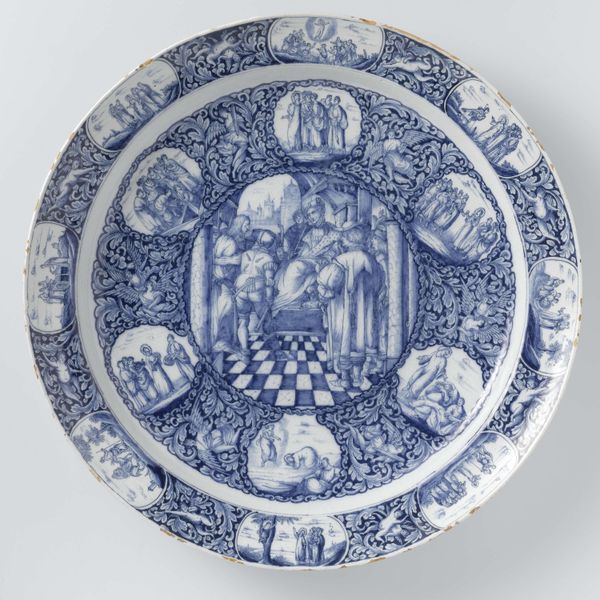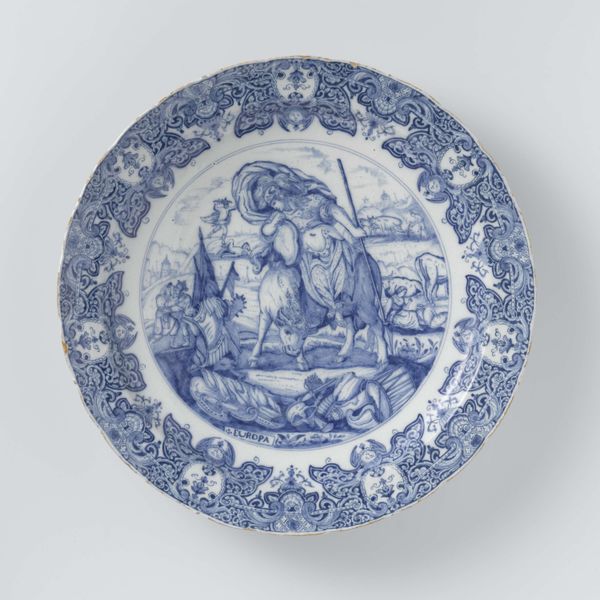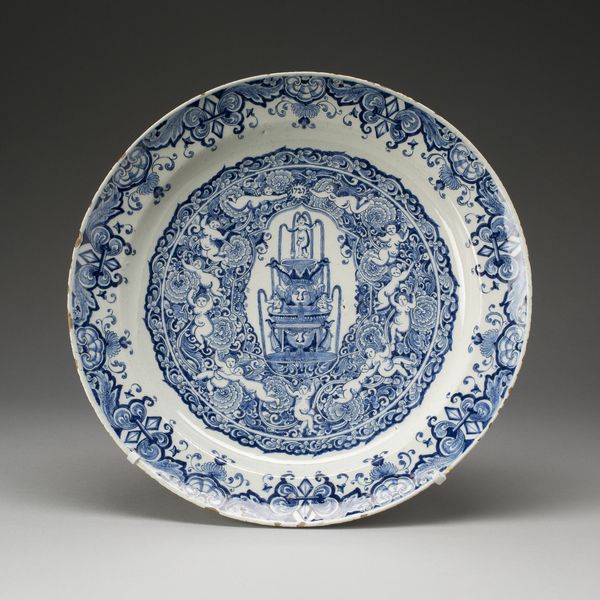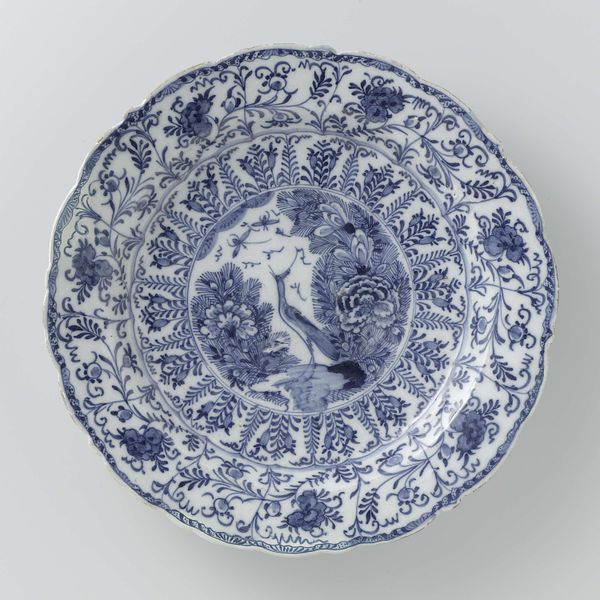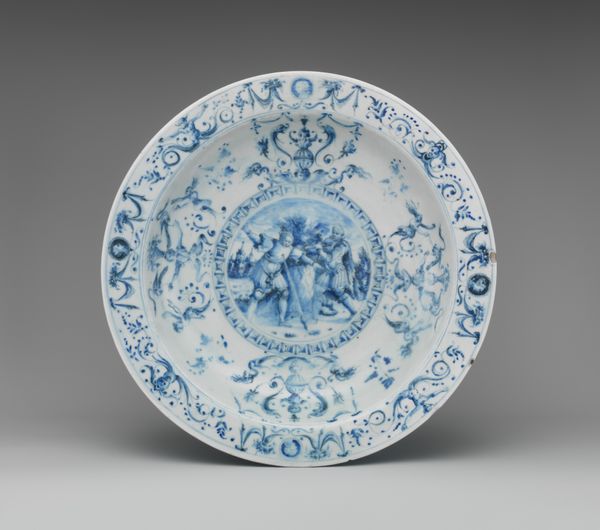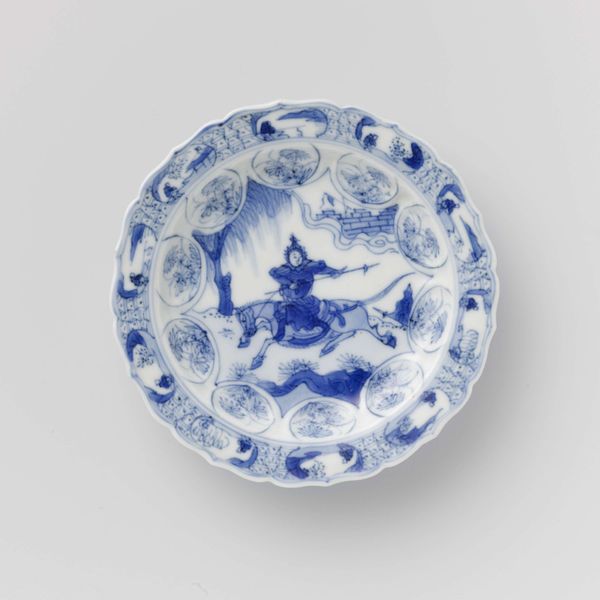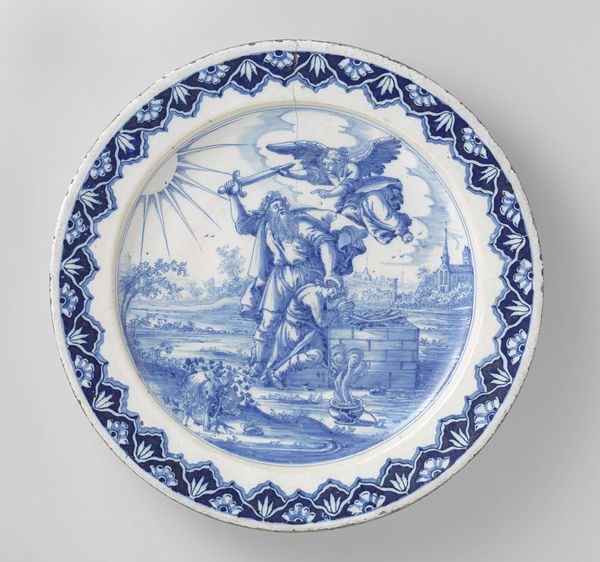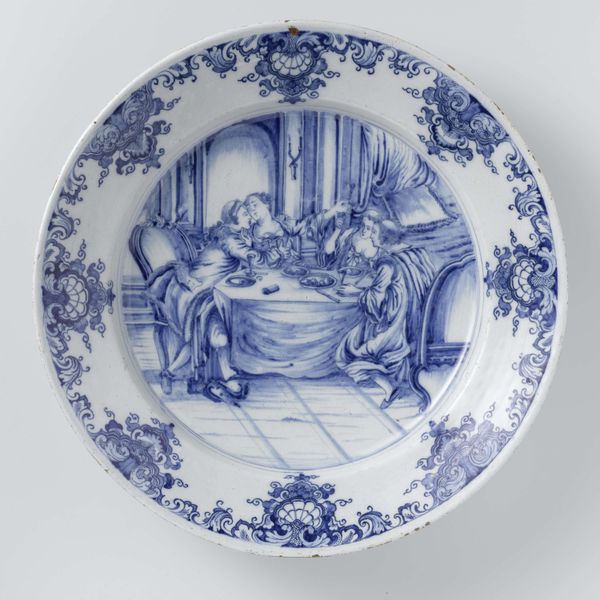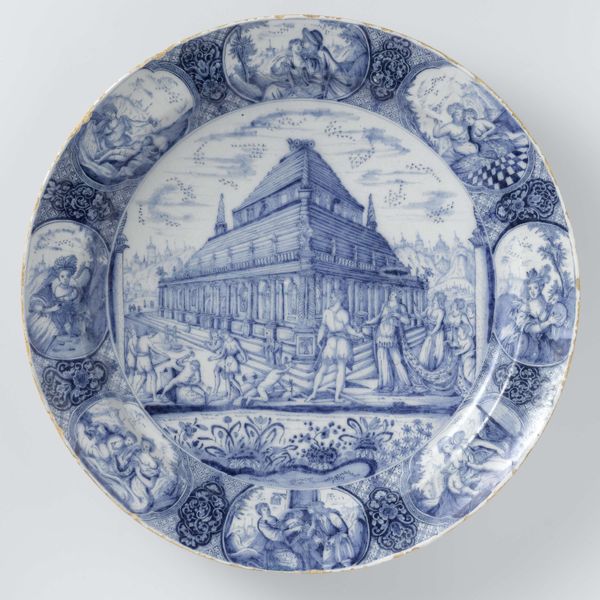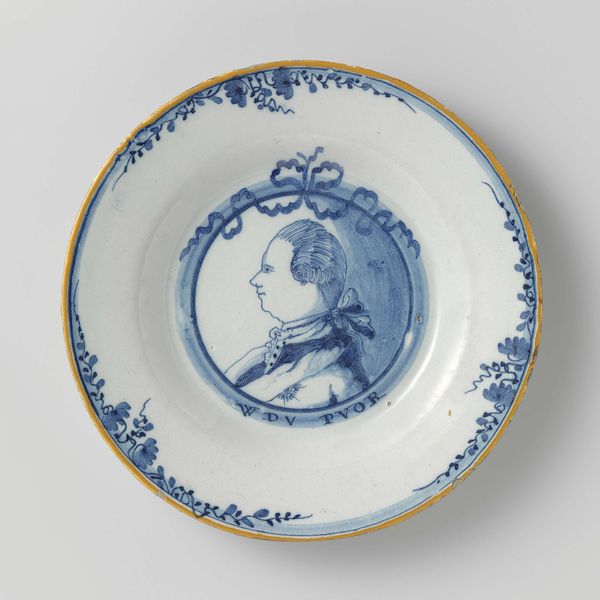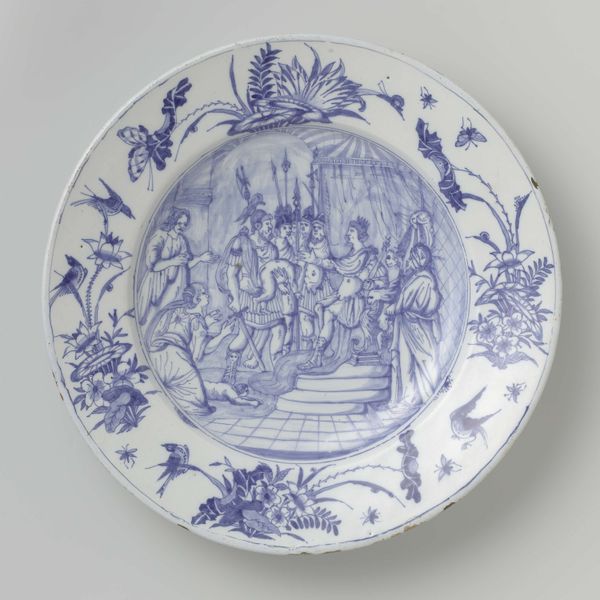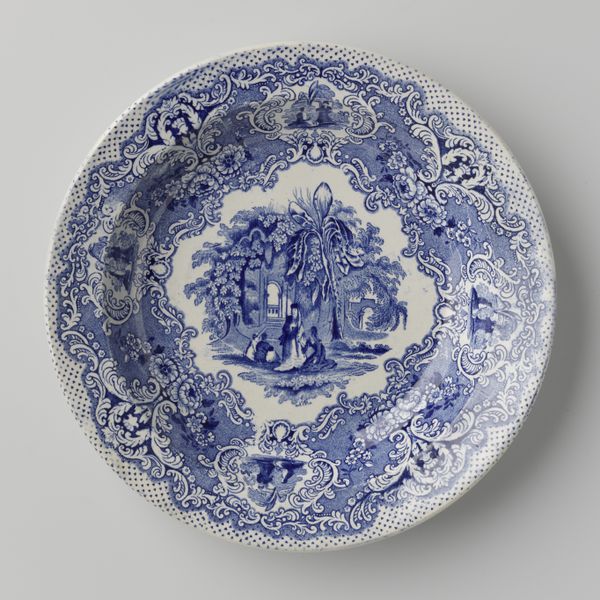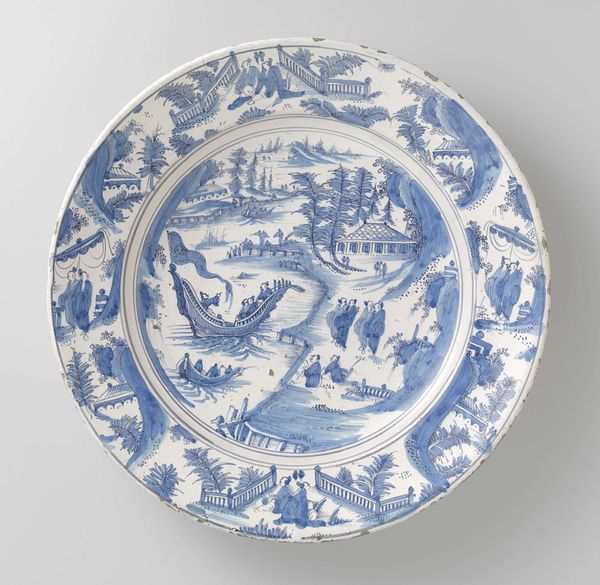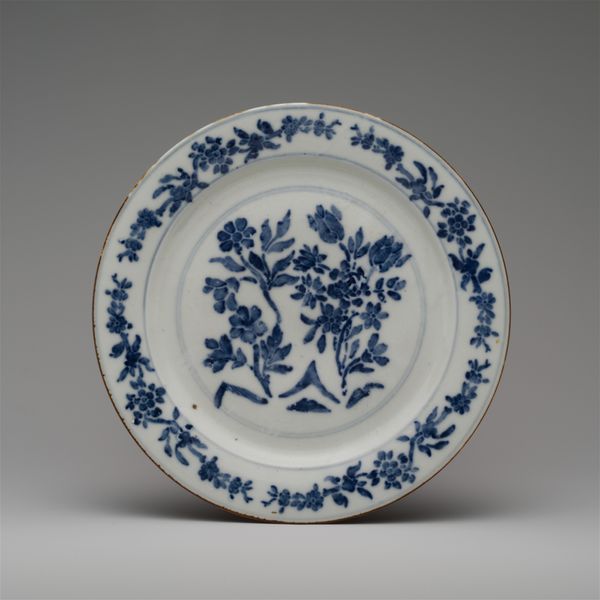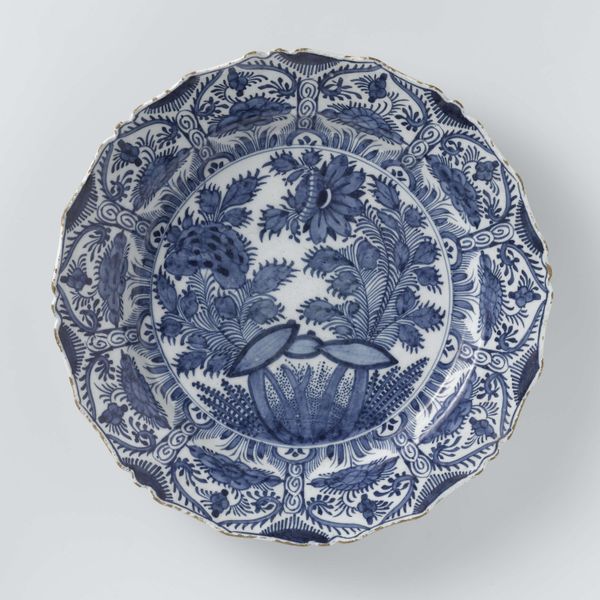
Copyright: Rijks Museum: Open Domain
This oval plate depicting George I, King of England, was made anonymously with earthenware and glaze. The blue and white Delftware captures the monarch framed by weaponry and flags, with his royal coat of arms below. Delftware was a Dutch industry that mimicked the much-desired Chinese porcelain, demonstrating the rising mercantile power of the Netherlands in the 17th and 18th centuries. The fashion for Delftware was driven by the Dutch upper classes who collected it to show off their worldly tastes and wealth. Royal portraiture was often used as propaganda, asserting power and legitimacy. George I, from the House of Hanover, was not a natural successor to the British throne, so images like this asserted his claim to power. Understanding the conditions in which art is made and consumed requires us to look beyond aesthetics, using historical records to see how art reflects and shapes society.
Comments
No comments
Be the first to comment and join the conversation on the ultimate creative platform.
